SABC 2
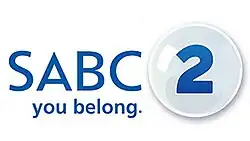 | |
| Country | South Africa |
|---|---|
| Network | SABC |
| Headquarters | SABC Television Park, Uitsaaisentrum, Johannesburg, South Africa |
| Programming | |
| Language(s) | |
| Picture format | 1080i HDTV |
| Ownership | |
| Owner | SABC |
| Sister channels | |
| History | |
| Launched | 5 May 1975 (test transmission) 6 January 1976 (start of regular broadcasts, as SABC TV/SAUK-TV) 31 December 1981 (as TV1) 4 February 1996 (as SABC 2) |
| Replaced | TV 2/3/4 |
| Former names | CCV TV |
| Links | |
| Website | www |
| Availability | |
| Terrestrial | |
| Sentech | SABC DTT Channel 2 |
| DStv | Channel 192 |
| OpenView | Channel 102 |
| Streaming media | |
| SABC Plus OTT | SABC Plus |
| DStv Now | Channel 192 |
SABC 2 is a South African free-to-air television channel owned by the South African Broadcasting Corporation (SABC). The channel was createdin its current form on 4 February 1996, due to the restructuring of the three national SABC networks.
As of March 2024, SABC 2 broadcasts programming only in English, Venda, Tsonga, Sotho, Sepedi & Setswana.
In August 2018, the channel started broadcasting in high definition.
History
SABC TV
South Africa was already served by some closed-circuit systems in hotels before SABC-TV started.[2] SABC began airing test cards in early 1975 on its transmitters[3] and started trialling its first television service on 5 May 1975 in South Africa's largest cities, and officially launched its first television channel on 6 January 1976 under the name SABC Television/SAUK-Televisie. The launch of SABC-TV caused South Africa to become the last country in the industrialised world to introduce television and had a viewership base of one million. Around 222,000 television sets were tuned in to the inauguration.[4] As with other countries, the launch of television had negative effects in other sectors of the country's entertainment industry, especially cinemas. Within the corporation, SABC's regional radio stations would suffer from loss of listeners to the new television network, but Radio 5's playlists remained unchanged.[5]
The service opened at 6pm with a bilingual opening speech presented by Heinrich Maritz (Afrikaans) and Dorianne Berry (English), the culmination of a five-year project. The first programme seen was a special presentation from the Children's and Youth division, in Afrikaans, which presented Haas Kas and other characters produced by the unit. The English-language The Everywhere Express, which had been shown in the test service the previous year, was also introductory in nature.[6]
The official opening of the service was at 8pm with a speech from Prime Minister John Vorster.[6] One million viewers saw its opening night, while approximately 250,000 television sets were sold in the country in the second half of 1975 alone.[7]
As of 1977, the SABC-TV service was delivered over eighteen transmitters:
- Alverstone-Durban-Pinetown: channel 4[8]
- Bloemfontein: channel 9[8]
- Cape Town: channel 8[8]
- Davel-Bethal-Ermelo: channel 22 (UHF)[8]
- East London: channel 9[8]
- George Mosselbay: channel 5[8]
- Glencoe-Dundee: channel 27 (UHF)[8]
- Hartbeesfontein-Klerksdorp: channel 45 (UHF)[8]
- Johannesburg: channel 13[8]
- Kimberley: channel 4[8]
- Kroonstad: channel 57 (UHF)[8]
- Middelburg-Witbank: channel 41 (UHF)[8]
- Port Elizabeth-Uitenhage: channel 7[8]
- Port Shepstone-Margate: channel 8[8]
- Pretoria: channel 5[8]
- Theunissen: channel 5[8]
- Villiersdorp: channel 7[8]
- Welverdiend-Potchefstroom: channel 7[8]
Two years after launch, a South African Sunday newspaper called the service "prissy and pricey": "prissy" due to the strict moral standards of the SABC and "pricey" due to the high costs of both buying a television set and paying the licence fee. The introduction of television advertising would at the time threaten advertisers in newspapers. The schedule lasted for five hours (6pm to 11pm, earlier closing on Sunday nights) with a few hours of sports on Saturdays. On a technical level, the SABC claimed to have the highest standards, but not at programming level. The service was also touted as a propaganda vehicle for the then-ruling National Party.[9]
By 1979, the broadcasts were picked up by 80% of the white population and 42% of the black population.[6] Censorship was still recurring, a famous example included SABC TV skipping an episode of Dallas in August 1979 that featured a homosexual affair, which was deemed "too sensitive" for the conservative South African mindset of the time, infuriating fans of the series.[10]
TV1
On 1 January 1982, two television channels were introduced: TV2 broadcasting in Zulu and Xhosa and TV3 broadcasting in Sotho and Tswana, both targeted at a Black urban audience and broadcasting on the same television frequency.[11] The main network, now called TV1, divided its broadcasting languages evenly between English and Afrikaans, as before. The channel introduced its first non-white continuity announcer, Vivian Solomons, for its Afrikaans segments in July 1983, who was of mixed race. Because SABC did not have a separate channel for mixed race and Indian South Africans, the corporation would increase the amount of non-whites appearing on the channel, though this caused complaints from viewers due to his appearance, making up most of the nearly 40 callers who contacted the corporation upon his introduction.[12]
A sitcom comparable to All in the Family, People Like Us, had its 26 episodes taped throughout 1987, but only aired for the first time on 23 December 1989 at a late slot (10:25pm on Saturdays) in order not to offend its white audience, while the timeslot was also chosen on purpose as kids of any race were already asleep by then. One viewer accused the corporation of cowardice under the grounds that, in order to increase its white audience, the series should have been moved to a prime time slot on weekdays.[13] The series aired weeks before Nelson Mandela's speech on 11 February 1990, which was broadcast by the corporation, breaking its biases for the first time in fourteen years.[14]
The end of Apartheid caused a series of radical changes for the channel, distancing itself from its segregated past. Ethnic mixing was now possible; its morning show Good Morning South Africa now had a white man and a black woman side by side, impossible in Apartheid days.[15] In 1992, four non-whites were hired for current affairs programming and a further four for religious programmes.[16] An agreement was signed with Sky News on 21 September 1993, enabling TV1 to air the channel during off-air hours from 15 October that year, akin to sister channel CCV which already had a contract with CNN International.[17] In 1994, with post-Apartheid democratisation, it was suggested that TV1 should broadcast entirely in English,[18] by October that year, it was suggested that a model similar to the one adopted in 1996 would be suggested for two of the SABC channels, with the third channel being run for "profit and entertainment", entirely in English.[19] At this time, the channel's slogan was This one's for you! (Dié een is vir jou! in Afrikaans).[15]
From February 1996, per a November 1995 decision, TV1 (under its new guise as SABC 2) would increase its programming in English, following the results of a demographic survey. The three channels combined would provide 65% English programming during prime time hours.[20]
SABC 2
In 1996, the SABC reorganised its three TV networks with the aim of making them more representative of the various language groups.[21] These were renamed to SABC 3 (formerly TV1), SABC 1 (formerly CCV) and SABC 2 (formerly NNTV). The amount of time allocated to Afrikaans-language programming on the new channel (SABC 2) fell from 50% to 15% - a move that alienated Afrikaans speakers. A spokesman for the SABC said that such a reduction was "inevitable in the post apartheid era", and that the SABC had not abided to the IBA's recommendations.[21]
Under the new format, 40% of SABC 2's schedule was in English, with the remaining 60% given to the other languages.[21] The new service catered at Afrikaans and Sotho speakers during prime time, all-day language breakdown was as of the time of the change: 41% English, 15% Afrikaans, 8% Sepedi, 6% Sesotho, 8% Setswana and 1% each for Xitsonga and Tshivenda. 21% of its programming was multilingual.[21]
With the commercialisation of the SABC in July 1997, the channel decided to drop its loss-making breakfast show Good Morning South Africa that it had inherited from the Apartheid-era TV1.[22] In late 1997, the SABC announced that the channel would house more public service programming. On 1 December that year, SABC 2 adopted a new look.[23]
For 2002, the channel was committed to be "the voice, the heart and the mind of South Africans", owing to its broadcast footprint - the largest out of any SABC terrestrial network. Aiming at increasing its audiences in the Black and Afrikaans sectors, the channel sought to increase its local offering, reflecting individual South African cultures and communities. Three new projects were being developed, The Res, Dark City and Zero Tolerance. 7de Laan increased its number of weekly episodes to four, while Muvhango was planned to enter its third season in April that year.[24]
On 1 March 2013, SABC 2 adopted its current logo. Blue is the main colour of the channel, but red, yellow and green are also used. However, at the time of rebranding, its programming was still seen as "dated"[25]
SABC 2 was initially announced to begin HD broadcasts via DStv during July 2018,[26] broadcasts started on 8 August 2018.[27][28]
Programming
After the SABC restructured its television channels, SABC 2 took the place of the old TV1 channel. The reduced prominence of Afrikaans angered many speakers of the language, although the channel still features a significant amount of Afrikaans programming, including a news broadcast every week night at 19:00 and weekends at 18:00.
M-Net seeing the market need, launched the Afrikaans subscription channel KykNet in 1999 and followed in 2005 with the music channel MK (originally known as MK89.) In 2009, M-Net launched Koowee, a kids channel broadcasting in Afrikaans.
Soapies, dramas and telenovelas
The channel is popular for its two longest-running soapies 7de Laan and Muvhango, dramas such as Erfsondes, Geraamtes in die Kas, Roer Jou Voete and 90 Plein Street, and Telenovelas such as Keeping Score, Giyani: Land of Blood and Die Sentrum.
Series
SABC 2 has in the past, broadcast international series such as NCIS, Pretty Little Liars, Teen Wolf and The Vampire Diaries. However, the channel is currently focused on local reality and actuality series such as Speak Out, Relate, and Saving Our Marriage, comedies such as Ga Re Dumele and Ke Ba Bolleletse, and a few international series such as American Ninja Warrior.
Talk and magazine
The channel has a small number of talk, travel and magazine shows. Shows include Motswako, Vusaseki, Nhlalala ya Rixaka, 50/50, Voetspore and TalkAbility.
Music
SABC 2 plays local afro-soul and pop music interludes in between shows. It also has music shows such as Afro Cafè, Soul'd Out Sessions, Kliphard, Musiek Roulette and Noot vir Noot.
Religion
The channel has religious shows aimed at Christianity, Judaism and Hinduism. Local shows include longest running show It's Gospel Time, Gospel Classics, Psalted ["Simcha"], Derech Eretz, and Issues of Faith.
Sports
SABC 2 rarely broadcasts live sports due to funding issues, and instead focuses on sporting highlights. It is mostly focused on boxing, rugby, swimming and athletics. In the recent year, it has broadcast a few football matches due to a high load of football broadcasting. It broadcasts Bafana Bafana, Banyana Banyana and CAF Champions League matches
News and current affairs
The channel provides two primetime bulletins for the TshiVenda/xiTsonga, and Sotho/Setswana/Sepedi languages. In addition, it has current affairs programmes including Ngula Ya Vutivi, Zwa Maramani and Leihlo La Sechaba. It also airs the longest-running breakfast show Morning Live. It is known for national events such as presidential inaugurations, State of the Nation Address, Budget Speeches, and parliamentary events. On 4 March 2024, the Afrikaans bulletin has been moved to SABC 3 on Mondays to Fridays @ 20:30 and Weekends @ 18:15.
Movies
The channel is known for family-friendly and dramatic movies, autobiographies and animated movies.
Youth and education
SABC 2 has a roster of shows from its SABC Education slate, most notably Takalani Sesame, It's For Life, The Epic Hangout, among others, and also brings educational shows on how to manage money and a focus on senior citizens, as well as other children's shows from Disney Junior, either in their original English soundtrack or dubbed in South African languages, such as The Lion Guard in isiZulu, Ben 10 in Afrikaans and Doc McStuffins in Sotho. For teens and preteens it offers comedy series from Disney Channel and Nickelodeon, such as ICarly, True Jackson, VP, A.N.T. Farm, Sanjay and Craig, The Sparticle Mystery, Star Falls and Cookabout, as well as local series including Signal High, Snake Park and Hectic Nine-9. Content that is most watched among the youth is the 17:00 slot, for airing anime series from Toei Animation, Studio Pierrot and TV Tokyo, notably airing popular series that have a cult following such as Yu-Gi-Oh!, Yu-Gi-Oh! GX, Yu-Gi-Oh! 5D's, Yu-Gi-Oh! ARC-V, Beyblade, Dragon Ball, Dragon Ball Z, Dragon Ball Z Kai, Dragon Ball GT, Dragon Ball SUPER, Naruto Shippuden, One Piece and Bleach.
List of Programmes
Imported Programmes
Current
Children's
Former
Children's
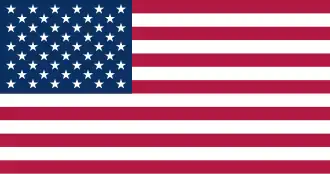 101 Dalmatians
101 Dalmatians 3-2-1 Penguins!
3-2-1 Penguins!.svg.png) 6teen
6teen Action Man
Action Man.svg.png) The Adventures of Blinky Bill
The Adventures of Blinky Bill Adventures of the Gummi Bears
Adventures of the Gummi Bears The Adventures of Portland Bill
The Adventures of Portland Bill.svg.png) The Adventures of the Aftermath Crew
The Adventures of the Aftermath Crew Alvin and the Chipmunks
Alvin and the Chipmunks Aladdin
Aladdin
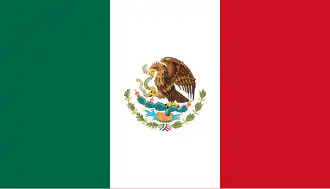 Amigo and Friends (In Both Afrikaans and English)
Amigo and Friends (In Both Afrikaans and English) Animaland
Animaland
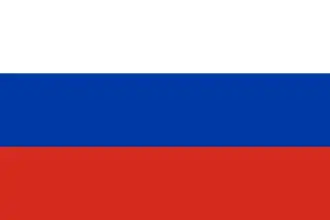
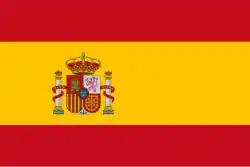


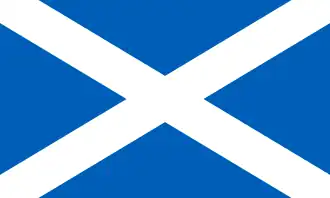 Animated Tales of the World
Animated Tales of the World.svg.png) Anna Banana
Anna Banana
.svg.png)
 Anthony Ant (In Afrikaans)
Anthony Ant (In Afrikaans)
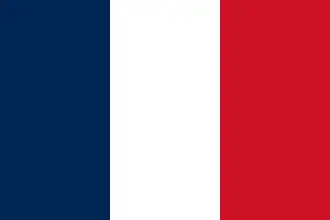 Archibald the Koala
Archibald the Koala
.svg.png) Arthur
Arthur A.J.'s Time Travelers
A.J.'s Time Travelers Barney
Barney Bear in the Big Blue House
Bear in the Big Blue House Bertha
Bertha
.svg.png) The Big Garage (In Sepedi)
The Big Garage (In Sepedi)
.svg.png)
.svg.png) Billy the Cat
Billy the Cat Blue's Clues
Blue's Clues The Blunders
The Blunders Bob the Builder
Bob the Builder Bobobobs (In Afrikaans)
Bobobobs (In Afrikaans) Bonkers
Bonkers Boohbah
Boohbah.svg.png) Bookmice
Bookmice.svg.png) Braceface
Braceface Brambly Hedge
Brambly Hedge The Brothers Flub
The Brothers Flub Brum (In Both Afrikaans and English)
Brum (In Both Afrikaans and English) Budgie the Little Helicopter
Budgie the Little Helicopter Bump
Bump

.svg.png) The Busy World of Richard Scarry
The Busy World of Richard Scarry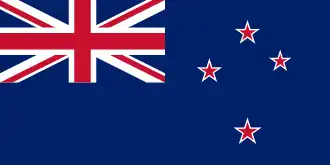 Buzz and Poppy
Buzz and Poppy Buzz Lightyear of Star Command
Buzz Lightyear of Star Command Captain Planet and the Planeteers
Captain Planet and the Planeteers.svg.png) Captain Power and the Soldiers of the Future
Captain Power and the Soldiers of the Future Chip 'N Dale Rescue Rangers
Chip 'N Dale Rescue Rangers The Crayon Box
The Crayon Box Darkwing Duck
Darkwing Duck Dave the Barbarian
Dave the Barbarian Dennis and Gnasher
Dennis and Gnasher Dig & Dug with Daisy
Dig & Dug with Daisy
.svg.png)
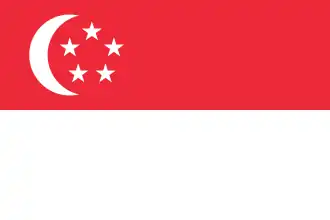 Dinosaur Train
Dinosaur Train
.svg.png) Dog City
Dog City Dog Tracer
Dog Tracer Doug
Doug DuckTales
DuckTales Earthworm Jim
Earthworm Jim Enid Blyton's Enchanted Lands
Enid Blyton's Enchanted Lands Even Stevens
Even Stevens Fantastic Four
Fantastic Four Festival of Family Classics
Festival of Family Classics Fireman Sam
Fireman Sam Fillmore!
Fillmore! The Forgotten Toys
The Forgotten Toys Fourways Farm (In Xhosa)
Fourways Farm (In Xhosa) Fudge
Fudge
 Funnybones
Funnybones
.svg.png)
 Gadget Boy & Heather
Gadget Boy & Heather Garfield and Friends
Garfield and Friends Gargoyles
Gargoyles Ghostbusters
Ghostbusters Goof Troop
Goof Troop.svg.png) The Happy Castle
The Happy Castle Hercules
Hercules The Hot Rod Dogs and Cool Car Cats (In Both Afrikaans, English and Tswana)
The Hot Rod Dogs and Cool Car Cats (In Both Afrikaans, English and Tswana) House of Mouse
House of Mouse The Incredible Hulk
The Incredible Hulk Jellabies
Jellabies Jimbo and the Jet-Set
Jimbo and the Jet-Set.svg.png) Johnson and Friends
Johnson and Friends Junglies
Junglies Jungle Cubs
Jungle Cubs.svg.png) Kaboodle
Kaboodle.svg.png) Katie and Orbie (In Zulu)
Katie and Orbie (In Zulu) Kim Possible
Kim Possible Kipper
Kipper Kissyfur
Kissyfur.svg.png) Kitty Cats
Kitty Cats.svg.png) Kleo the Misfit Unicorn (In Tswana)
Kleo the Misfit Unicorn (In Tswana) The Legends of Treasure Island
The Legends of Treasure Island The Legend of Tarzan
The Legend of Tarzan The Little Mermaid
The Little Mermaid Lloyd in Space
Lloyd in Space Lizzie McGuire
Lizzie McGuire Lilo & Stitch
Lilo & Stitch Marsupilami
Marsupilami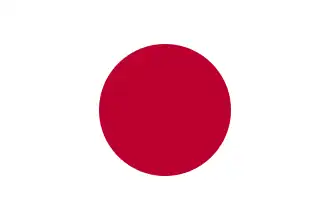 Medabots
Medabots

.svg.png) Magic Adventures of Mumfie (In Both Afrikaans and English)
Magic Adventures of Mumfie (In Both Afrikaans and English).svg.png)
 Mona the Vampire
Mona the Vampire Monty the Dog who wears glasses (In Sepedi)
Monty the Dog who wears glasses (In Sepedi) The Morph Files
The Morph Files Mighty Ducks
Mighty Ducks.svg.png)
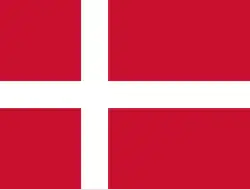 Mumble Bumble
Mumble Bumble
 The Mysterious Cities of Gold
The Mysterious Cities of Gold The New Adventures of Winnie the Pooh
The New Adventures of Winnie the Pooh.svg.png)
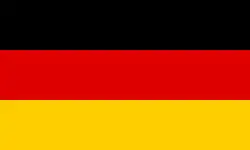 Ned's Newt
Ned's Newt Nightmare Ned
Nightmare Ned Noddy's Toyland Adventures
Noddy's Toyland Adventures Oakie Doke (In Xhosa)
Oakie Doke (In Xhosa) Old Bear Stories
Old Bear Stories
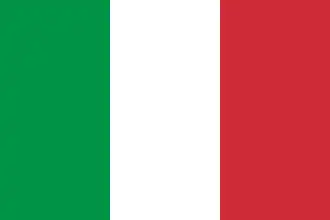 Orson and Olivia (In Afrikaans)
Orson and Olivia (In Afrikaans).svg.png)
.svg.png) Ovide and the Gang (In Afrikaans)
Ovide and the Gang (In Afrikaans) Peppa Pig
Peppa Pig Pepper Ann
Pepper Ann.svg.png) Petals
Petals
.svg.png) Pingu
Pingu Popeye and Son
Popeye and Son Pokémon
Pokémon Postman Pat
Postman Pat Press Gang
Press Gang Princess Gwenevere and the Jewel Riders
Princess Gwenevere and the Jewel Riders.svg.png) Pugwall's Summer
Pugwall's Summer Quaq Quao
Quaq Quao Quack Pack
Quack Pack The Raggy Dolls
The Raggy Dolls
.svg.png)
 The Rainbow Fish
The Rainbow Fish Renford Rejects
Renford Rejects Recess
Recess.svg.png)
 Robinson Sucroe
Robinson Sucroe Rocko's Modern Life (In Afrikaans)
Rocko's Modern Life (In Afrikaans) Rosie and Jim
Rosie and Jim Rugrats
Rugrats
.svg.png) Salty's Lighthouse
Salty's Lighthouse Samurai Pizza Cats
Samurai Pizza Cats The Sarah Jane Adventures
The Sarah Jane Adventures Shining Time Station
Shining Time Station The Shoe People
The Shoe People.svg.png) Skippy: Adventures in Bushtown
Skippy: Adventures in Bushtown The Slow Norris (In Afrikaans)
The Slow Norris (In Afrikaans) Spheriks
Spheriks Spider-Man
Spider-Man SpongeBob SquarePants
SpongeBob SquarePants Supermodels
Supermodels TaleSpin
TaleSpin Teddy Drop Ear
Teddy Drop Ear Teddy Trucks (In Afrikaans)
Teddy Trucks (In Afrikaans) Teacher's Pet
Teacher's Pet Teamo Supremo
Teamo Supremo Titch
Titch Timon & Pumbaa
Timon & Pumbaa.svg.png) Toad Patrol
Toad Patrol Tots TV
Tots TV Transformers: Armada
Transformers: Armada Transformers: Energon
Transformers: Energon Truckers
Truckers Tube Mice
Tube Mice Victor & Hugo: Bunglers in Crime (In Afrikaans)
Victor & Hugo: Bunglers in Crime (In Afrikaans) The Weekenders
The Weekenders.svg.png) What About Mimi?
What About Mimi?
 Where's Wally?
Where's Wally? The Wild House
The Wild House The Wild Thornberrys
The Wild Thornberrys.svg.png) Wimzie's House
Wimzie's House The World of Peter Rabbit and Friends
The World of Peter Rabbit and Friends X-Men
X-Men
Comedy
 ALF (In Afrikaans)
ALF (In Afrikaans) The Critic
The Critic The Nanny
The Nanny The Sinbad Show
The Sinbad Show The Tony Danza Show
The Tony Danza Show Who's the Boss?
Who's the Boss?
Drama
.svg.png)
 Counterstrike
Counterstrike Dallas
Dallas Dellaventura
Dellaventura Magnum, P.I.
Magnum, P.I. Miami Vice (In Afrikaans)
Miami Vice (In Afrikaans)
 Xena: Warrior Princess
Xena: Warrior Princess
Magazine
Soap Opera
Documentary
Talk Shows
See also
References
- ^ "The Media Development and Diversity Agency - a draft position paper". South African Government Information. November 2000. p. 68. Archived from the original on 2009-08-31. Retrieved 2008-11-30.
- ^ "World Communications" (PDF). UNESCO. 1975. p. 112. Retrieved 19 April 2024.
- ^ "Television" (PDF). March 1975. p. 1121. Retrieved 5 February 2024.
- ^ Botha, Koos (6 January 1976). "Gala-wegspring vir SAUK-TV!" [Gala launch for SABC-TV!]. Die Transvaler (in Afrikaans). Johannesburg, South Africa. p. 1. Retrieved 30 January 2025 – via East View Global Press Archive.
- ^ "Billboard" (PDF). 14 February 1976. p. 46. Retrieved 5 February 2024.
- ^ a b c "TELEVISION COMES TO SOUTH AFRICA" (PDF). University of Pretoria. 2008. Archived (PDF) from the original on 20 March 2022. Retrieved 5 February 2024.
- ^ South African TV Makes Debut; Vorster is Wary of Its Dangers. (1976, Jan 06). New York Times (1923-)
- ^ a b c d e f g h i j k l m n o p q r "Television Factbook" (PDF). 1977. p. 1121. Retrieved 31 March 2021.
- ^ "The black and white TV show". New Nation. 8 January 1978. Retrieved 6 February 2024.
- ^ Missing Dallas episode enrages South Africans. (1979, Sep 05). The Globe and Mail
- ^ Hachten, William A.; Giffard, C. Anthony (1984). The Press and Apartheid: Repression and Propaganda in South Africa. Springer. p. 222. ISBN 9781349076857.
- ^ INTERNATIONAL NEWS IN BRIEF. (1983, Jul 08). Philadelphia Inquirer
- ^ Wren, C. S. (1990, Jan 08). South African TV gets its own Archie Bunker. The Globe and Mail
- ^ February 11 1990: Mandela's media conquest
- ^ a b McLairn, Kimberly J. (25 July 1995). "The Voice of Apartheid Goes Multicultural". The New York Times. Archived from the original on 26 May 2015.
- ^ Cohen, T. (1993, Feb 01). South African TV network now broadcasts in black and white: [1* edition].
- ^ "Murdoch enters African market". The Straits Times. 23 September 1993. Retrieved 21 July 2024.
- ^ "SABC changes slowly in the new South Africa", Africa Film & TV Magazine, nº. 4, September 1994
- ^ AP. (1994, Nov 25). S. AFRICAN TV HOPES TO REFLECT NATION'S NEW FACE: [FIVE STAR EDITION]. St.Louis Post - Dispatch (Pre-1997 Fulltext)
- ^ DAVID BERESFORD, I. J. (1995, Dec 01). Afrikaans loses battle for air time on S african TV. The Guardian (Pre-1997 Fulltext)
- ^ a b c d "1, 2, 3, SABC!", Africa Film & TV Magazine, nº. 9, April-June 1996
- ^ Haffajee, Ferial (20 June 1997). "SABC's radical changes". Mail & Guardian.
- ^ Smith, Janet (5 December 1997). "New-look Simunye channel". Mail & Guardian.
- ^ "SABC 2 - plans for 2002", Africa Film & TV Magazine, nº. 32, February-April 2002
- ^ SABC2 relaunches brand: You belong
- ^ SABC TV finally going HD
- ^ SABC 2 SWITCHES TO FULL HD
- ^ SABC2: now also in HD